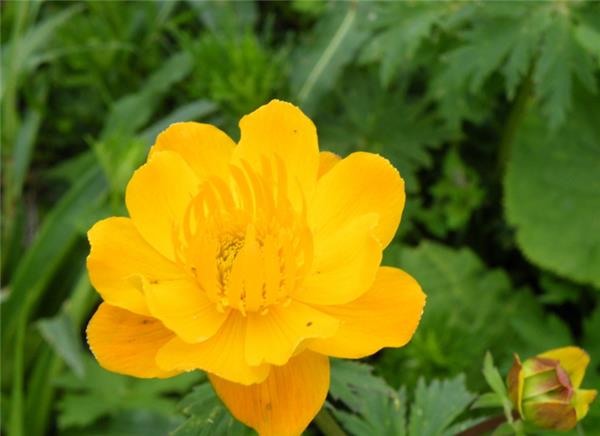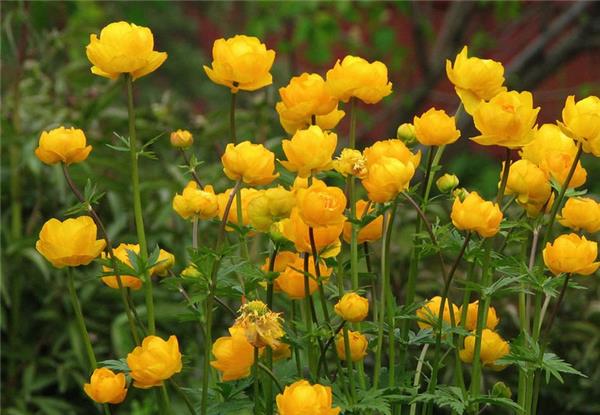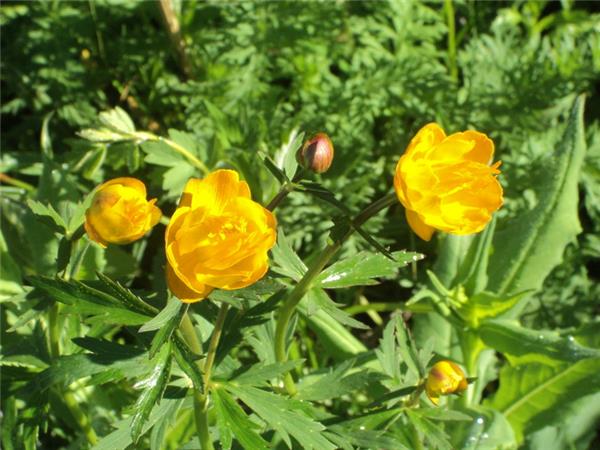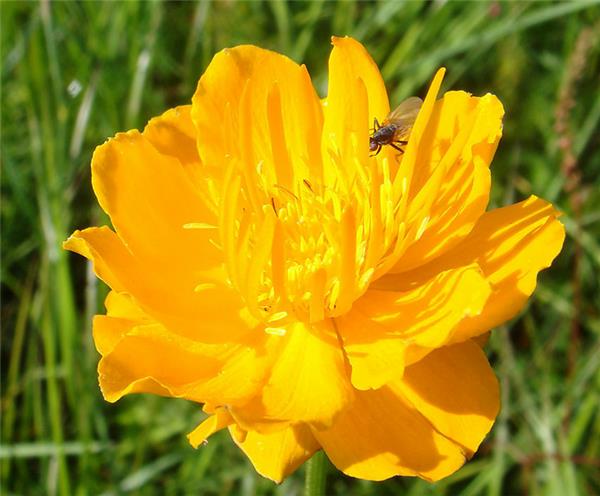Culture methods of Trollius
Trollius, also known as drought lotus cold lotus, drought lotus cold lotus, dry land lotus, golden knot, is a herbaceous ornamental plant, the following and everyone to share is the cultivation method of trollius.

Culture method of Trollius chinensis
1. Soil: Trollius has low requirements for soil. Potting should be mixed with 7 parts of rotten leaf soil and 3 parts of garden soil, and appropriate amount of cake fertilizer or other organic fertilizer should be added as base fertilizer.
2, watering: usually pay attention to timely watering, because the branches inside the pulp, so the whole growing season needs sufficient moisture, and maintain a high air humidity. Do not make pot soil too dry or too wet, such as too dry leaves easy to yellow; too wet water is easy to rot roots.

3, temperature: golden lotus cold, perennial survival in 2-15 degrees Celsius, winter is too cold, it is best to move indoors for maintenance.
4. Fertilization: Fertilization at seedling stage can be carried out once every 10 days, and fully decomposed cake fertilizer water can be applied. After that, it is appropriate to apply less fertilizer. Generally, thin fertilizer can be applied once every 20 days. However, before flowering, fertilizer can be applied once every 7-10 days to promote flowering. Fertilization must be appropriate, especially excessive nitrogen fertilizer, will cause only long leaves do not bloom consequences, thus affecting the viewing effect.

5, pruning: in order to make the golden lotus leaves fat flower beauty, but also must use thin bamboo to set up a bracket, the vine stem evenly tied to the shelf, and make the leaf surface as far as possible in one direction, before the shelf to pick the heart, leaving the main stem and thick side stem, in order to promote its germination more branches, to achieve the purpose of leaf luxuriant flower.
6. Disease and pest control: The most common diseases of Trollius chinensis are leaf spot disease, wilt disease and virus disease. The control method can be sprayed with 500 times solution of 50% Tobucine WP. Usually maintenance should pay attention to ventilation, disinfection, timely drainage, in case of rotten roots. Insect pests mainly include whitefly moth, whitefly, red spider, mole cricket, insect, etc. In case of insect pests, pollution-free pesticides such as pirachlorine, buprofezin and dimekill should be applied in time to avoid affecting the growth of golden lotus flower.

7. Field management
1) Loosening and weeding: In the early stage of growth of golden lotus flowers, attention should be paid to weeding and loosening, and keeping the border clean and weedless. July plants basically closed ridge after the operation is inconvenient, in order to avoid injury to the flower stem, it is best not to loosen the soil.
2) Irrigation and drainage: Trollius is not drought tolerant at seedling stage, so it should be watered frequently to keep the soil moist, but it should not be too wet to prevent Trollius rotted roots from dying. In case of rainy season, attention should be paid to drainage.
3) topdressing: trollius should be topdressing nitrogen fertilizer after seedling recovery. When transplanting seedlings in the same year, human and animal feces and urine should be diluted 1~2 times. Ammonium phosphate granular fertilizer can be applied from June to July, and organic fertilizer should be applied before freezing in winter, applying 1500~2000kg per 667 square meters. Every time fertilizer should be applied in the ditch, cover soil.
4) Shade: special attention should be paid to shade when introducing Trollius chinensis in low altitude areas, with shade degree controlled at 30%~50% and shed height about 1m. Shed materials can be obtained locally or intercropped with tall stalk crops or fruit trees to achieve shade purposes.
5) Transplantation: If Trollius chinensis is to be used as an ornamental plant, it should be transplanted with soil when its seedlings are 5~8cm high. When transplanting, 3~5 seedlings should be used as a pier, and 1~3 leaves at the bottom should be removed at the same time to reduce nutrient consumption. Transplantation depth should be shallow not deep, and timely watering.
Related
- Wuhan Hospital Iron Tree Blooming Result Was Instantly Frightened by the Gardener Master
- Which variety of camellia is the most fragrant and best? Which one do you like best?
- What is the small blue coat, the breeding methods and matters needing attention of the succulent plant
- Dormancy time and maintenance management of succulent plants during dormancy
- Minas succulent how to raise, Minas succulent plant pictures
- What are the varieties of winter succulent plants
- How to raise succulent plants in twelve rolls? let's take a look at some experience of breeding twelve rolls.
- Attention should be paid to water control for succulent plants during dormant period (winter and summer)
- Watering experience of twelve rolls of succulent plants
- Techniques for fertilizing succulent plants. An article will let you know how to fertilize succulent plants.



